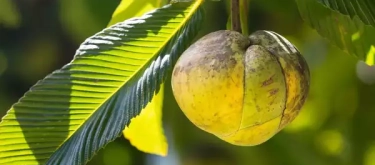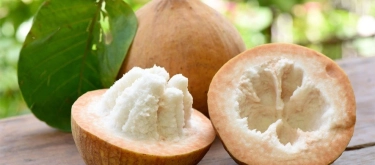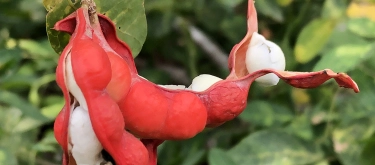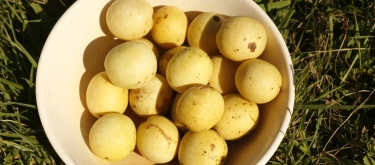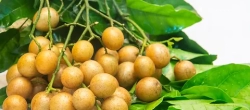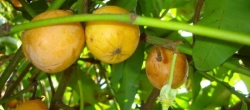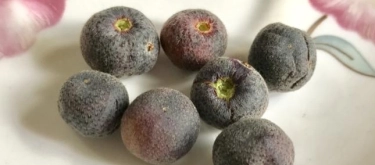Tamarind (Tamarindus indica): Taste Profile, Aroma, Benefits and Health Risks
Tamarind (Tamarindus indica), also known as Indian date, is a tropical fruit native to Africa but widely cultivated in India, Southeast Asia, and Latin America. This fruit grows in large brown pods containing tangy-sweet pulp that is extensively used in global cuisines, from Indian curries and Thai soups to Mexican candies and African sauces. Beyond its culinary applications, tamarind has long been valued in traditional medicine for its digestive and antioxidant properties.
Tamarind (Tamarindus indica) is generally safe for consumption but may cause allergic reactions in individuals sensitive to legumes, as it belongs to the Fabaceae family. Due to its high acidity, excessive consumption may lead to acid reflux or digestive discomfort. Tamarind may also interact with blood-thinning medications and should be consumed cautiously by individuals on anticoagulants. Pregnant women should consult a doctor before consuming tamarind in large amounts.
What does Tamarind (Tamarindus indica) taste like?
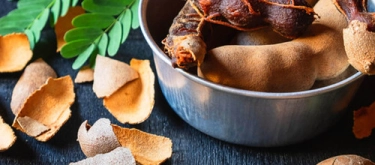
Complete Sensory Description
Taste
Tamarind has a complex balance of sweetness, tanginess, and acidity. When ripe, the pulp develops a rich, caramel-like sweetness with sharp citrusy undertones. The tartness is similar to lemon or sour plums but with a deeper, almost molasses-like depth. Unripe tamarind is significantly more sour and is often used as a souring agent in cooking.
Aroma
The aroma of tamarind is fruity, earthy, and slightly fermented, with hints of dates, citrus, and dried apricots. When cooked, it releases a warm, tangy fragrance that intensifies its depth of flavor.
Texture
The ripe tamarind pulp is sticky, fibrous, and slightly chewy, clinging to hard, glossy seeds inside the pod. The raw pulp is dense and pasty, while processed tamarind paste has a smooth, gel-like consistency.
Appearance
Tamarind fruit grows in elongated, curved pods that measure between 10 to 15 cm in length. The outer shell is brown and brittle, easily breaking to reveal the dark brown, sticky pulp inside. Each pod contains several large, flat seeds embedded in the flesh.
In-depth Flavor Analysis
Tamarind’s sweet-sour taste is due to the combination of tartaric, malic, and citric acids, which contribute to its tangy profile. Natural sugars like fructose and glucose provide a balancing sweetness. Polyphenols and flavonoids, particularly in the skin and pulp, contribute to its slightly astringent aftertaste. As the fruit ripens, enzymatic changes reduce its acidity, enhancing the sweetness and caramel-like depth.
When tamarind is dried or processed into paste, the concentration of sugars and acids increases, making the flavor richer, more robust, and more complex. Cooking tamarind with spices, sugar, or salt further enhances its natural umami-like depth.
Varieties and Culinary Applications
Tamarind is classified into sweet tamarind (primarily eaten raw) and sour tamarind (commonly used in cooking). Its applications include:
- Sauces and pastes – key ingredient in Worcestershire sauce, Pad Thai sauce, and Indian chutneys.
- Curries and stews – used in South Indian sambar, Thai soups, and Mexican mole.
- Beverages – blended into refreshing drinks in Latin America and Southeast Asia.
- Confections – made into tamarind candies, syrups, and jams.
- Marinades and glazes – enhances meats like pork, fish, and poultry with its rich, tangy depth.
Selection and Storage
When selecting tamarind, choose pods that are firm, heavy, and intact, avoiding those with cracks or mold.
- Whole tamarind pods can be stored in a cool, dry place for several months.
- Tamarind paste or concentrate should be kept in an airtight container in the refrigerator, lasting up to six months.
- Dried tamarind blocks can be stored in the pantry for extended periods and rehydrated before use.

Nutritional Insights
Tamarind is packed with essential nutrients, including:
- Vitamin C – supports immune function and collagen synthesis.
- Magnesium and potassium – contribute to heart health and muscle function.
- Iron – aids in red blood cell production.
- Antioxidants (polyphenols and flavonoids) – help combat inflammation and oxidative stress.
- Dietary fiber – promotes digestion and regulates bowel movements.
Expert Insights & Culinary Tips
- Balancing acidity – Tamarind pairs well with sweet ingredients like jaggery, coconut, and honey to balance its tanginess.
- Enhancing depth – Cooking tamarind with spices like cumin, chili, and cinnamon enhances its rich umami-like complexity.
- Quick extraction – Soak dried tamarind pulp in warm water to extract the juice for sauces and beverages.
- Flavor pairings – Works well with ginger, garlic, soy sauce, and tropical fruits like mango and pineapple.
Interesting and Curious Facts
- Tamarind trees can live for over 200 years, producing fruit annually.
- The wood of the tamarind tree is so dense that it sinks in water.
- In Thailand and Mexico, tamarind-based candies are extremely popular, often coated with chili and sugar.
- Ancient Egyptians and Indians used tamarind medicinally for its cooling and digestive properties.
Harm and Dietary Considerations
- High acidity – May cause acid reflux or irritation in individuals with gastric sensitivity.
- Laxative effect – Excessive consumption may lead to diarrhea or digestive discomfort.
- Potential medication interactions – Tamarind may enhance the effects of blood-thinning medications, requiring caution for individuals on anticoagulants.
- Allergic reactions – Rare but possible in individuals sensitive to legume family plants.
Religious Dietary Considerations
Tamarind is permissible in most religious dietary laws, including Hinduism, Islam, and Buddhism. It is commonly used in Indian, Thai, and Middle Eastern vegetarian and vegan cuisine.
Final Thoughts & Sensory Journey
Tamarind is a versatile and intensely flavorful fruit that adds depth, acidity, and natural sweetness to a wide variety of dishes. Its unique balance of sour, sweet, and umami flavors makes it indispensable in global cuisine. Whether used in a savory curry, a refreshing drink, or a sweet confection, tamarind offers a rich and layered sensory experience.
Resources
- Journal of Food Science – Nutritional and chemical analysis of tamarind.
- Handbook of Tropical Fruits – Traditional uses and storage recommendations.
- Ayurvedic Materia Medica – Medicinal benefits of tamarind in traditional medicine.

